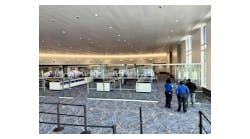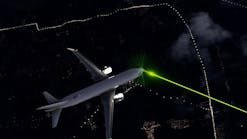Me, neither... but one very good reason appears to be the utter uselessness of the program since 2012, as outlined in a recent DHS Inspector General report, which says, among other things, “TSA Did Not Properly Plan, Implement, and Manage Its Quiet Skies Program.“ I will credit them for most colossal understatement of the year (to date.)
You may also not recall Behavior Detection Officers (BDOs) who were presumably trained to identify potential terrorists by their behavior. Dozens of security industry observers, including myself, complained for years about the gross waste of time, manpower and money... the entire list of many dozens of observational criteria is at best bizarre; I typically hit eight of them just walking in the door... here’s just a few:
- Reversing while walking
- Stopping while in transit
- Observing the boarding gate
- Boarded last
- Rapid blinking, cold stare
- Slept during most of flight
- Slept briefly
- Used lavatory
- Travel with others
- Picked up by private or rental car
My favorite criterion of suspiciousness on most of the multiple sub-category lists: “Other.”
I raise the BDO example for two reasons: numerous studies by government and scientific organizations determined that the BDO program was no better than a coin toss in identifying bad guys, so when TSA killed the program, they apparently were simply redeployed as the Quiet Skies program. The difference: BDOs mostly wandered around the terminal looking for “suspicious” people fitting their ridiculous list; Quiet Skies agents were provided with data files on specific targeted individuals not under any investigation, and were assigned to follow them, usually with three (3) Federal Air Marshalls on board the flight to their destination, and report back. As many as 3,000 FAMs in recent years worked the program, many of them complaining anonymously about silly tasks such as monitoring whether travelers use a phone, go to the bathroom, chat with others, or change clothes, or a long list of everyday behavior, reportedly just for TSA to keep them busy and prevent the program from being eliminated from the budget.
Results for two recent total years: three “suspicious activity” reports, zero “threats” – None. Zilch. Zip. Seems like three FAMs traveling together violates their own criterion - do they self-report? The FAM pay range is $96,567 to $103,555. Complete operational data has been redacted from the IG report so it’s not possible to determine the full range of financial and staffing impact – how much triple-FAM surveillance of non-suspicious, non-threatening and unsuspecting normal persons creating non-event reporting of non-useful and irrelevant data by three $100,000-salaried persons occupying three aircraft revenue seats taking notes on how long I sleep and how often I need to pee. Do the math.




